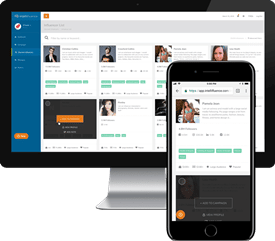Last Updated on June 8, 2020
Social influence is a popular marketing buzzword in 2018, but the concept has been around for years, if not centuries. The main difference between now and hundreds of years ago is that we are updating friends, fans, and followers on social media. Once you understand the psychological nature of social influence and how it affects the human brain, you can tap into this tool and use peer Influencers to promote your brand and grow your business. With the right planning, you can develop a social strategy that really connects you with your customers.
Where Does it Begin?
Social influence starts in infancy. Newborn babies, toddlers, and kids are influenced by their parents as they learn how to act, speak, and think. From passing on an accent to a love of a favorite sports teams, kids learn from their parents and start realizing what is acceptable and what isn’t. An older sibling starting on the baseball team is cool, and cheering for the Yankees in a Boston-dominate family isn’t.
Social influence impacts people throughout their lives. As kids go to school, leave for college, and mature into adulthood, their “Influencers” become their classmates, peers, and co-workers. People across all cultures and generations follow a set of norms for what is acceptable and what isn’t.
Because most people are conditioned to listen and learn from their peers, more brands are tapping into social influence to grow their business. If they can rank as acceptable or cool among a group of peers, then the entire social circle is likely to view the brand positively. This is how social influence moves from a psychological theory to a marketing strategy.
Social Influence In the Digital Era
Social influence and influencer marketing are closely intertwined. In theory, social media users follow other Peer Influencers and are peer Influencers themselves. A few years ago, the now-defunct Klout tried to measure the social influence of internet users. A Klout score was meant to determine how much “pull” someone had within their community by reviewing the number of people they could reach and the percentage of those people who take action.
Internet users are constantly sharing what they like and don’t like with their peers. They also listen to what their friends like (and don’t like) and take action based on their recommendations. More than 80 percent of consumer purchasing decisions are influenced by friends’ social media posts. Furthermore, 53 percent of people recommend companies or products in tweets, and 48 percent of people follow through and make purchases along with the recommendations.
Brands that tap into social influence can increase their overall digital footprint, but they can also grow their business as Peer Influencers convince others to buy their products.
How Brands Use Social Influence
Companies can use social influence in two main ways: passive influence and active influence. Your brand likely already uses passive influence. Passive influence comes from the online reviews, social media comments, and word-of-mouth recommendations from customers. It can grow your brand or destroy your business.
Active influence involves reaching out to influencers and asking them to promote your brand. If you’re primarily focused on YouTube, you would be looking for a Top YouTube Influencer to help with your campaign. This could be a paid promotion or a free call-to-action to leave a review. In this case, the business takes control of who is promoting the brand and, occasionally, what influencers say.
Character Traits to Consider
Brands are constantly looking for peer influencers to promote their products, services, and companies. They want to hear from people who really appreciate their brand and recommend it objectively over others. Peer Influencers who are hoping to attract brands can polish their social media presence and take steps to prove that they are reputable. A few key traits of top peer influences include the following:
Trust. People listen to social influencers when they know they can trust their word and the products they promote.
Knowledge. Social influencers need in-depth knowledge of the product, industry, and competition on the market. With this information, they can objectively promote brands that they think are best.
Persuasion. Top social influencers convince people to take action. Not only do they provide information, but they also really sell people on the importance of checking out a business or buying a product.
Strategy. Influencers need to determine the best products to promote, when to promote them, and how many to promote at a time. They know that their audiences will get overwhelmed or tune out if they recommend too many products or services at once.
As you can see, maintaining Peer Influencer status is a delicate balance. Once trust is lost or people stop listening, the value of the social influence decreases significantly.
Both brands and internet users stand to benefit from social influence. Internet users can leverage their influence and guide their friends, peers, and co-workers to make smart decisions, while brands can profit from peer-approved recommendations. Social influence will always play a major role in our society, regardless of the communication methods we use to wield it.

SallyBot is committed to helping users get the most out of Intellifluence. By helping brands create campaigns, providing unparalleled customer service and offering useful advice, nothing makes SallyBot happier than hearing she is liked… Really, really liked.






